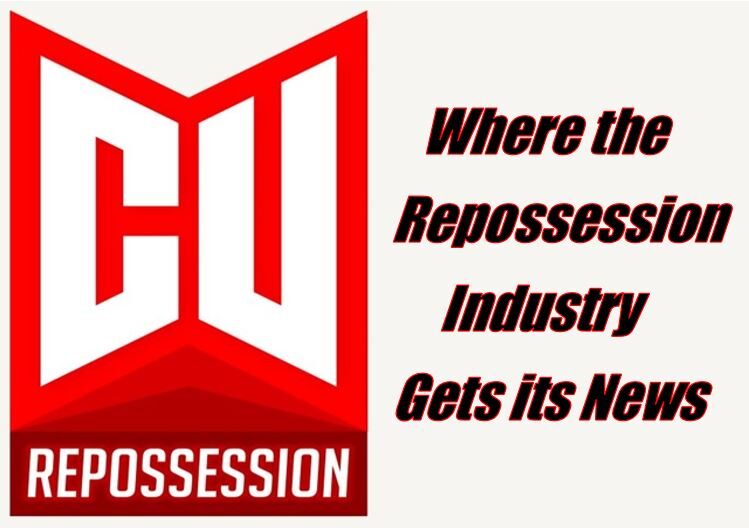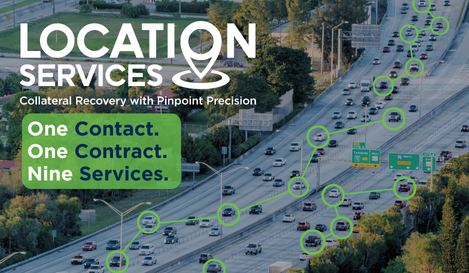With the mountains of required data collected and maintained by the federal government, it has always surprised me how little is collected on repossession activity. Seriously, is there any one regulating body that can tell you how many cars were repossessed last year with any degree of certainty? No, but that may soon change.
On February 23rd, the Consumer Financial Protection Bureau (CFPB) published an article titled “Our auto finance data pilot.” Within it, they announced that they have issued orders to nine large auto lenders to provide information about their auto lending portfolios, adding that “We routinely ask lenders in different sectors of the market to provide information and data that helps us monitor risks to consumers and to publish aggregated findings that are in the public interest.”
They report that “These nine lenders represent a cross-section of the auto finance market. The data collected from their responses to these orders will help us build a quality data set that provides insights into lending channels, loan performance, and inform potential future data collection efforts.”
While they don’t state who the nine lenders are, they are all obviously of the $10B asset size threshold for CFPB supervision. As far as their repossession practices go, all are very likely to be employing one or more of the nation’s large repossession forwarding companies and using license plate recognition technology (LPR).
They are showing a keen interest in how many days past due a loan typically is before a vehicle is repossessed. How long the consumer has paid on the loan before a repossession, and post-repossession impacts for the borrower and lender. Citing a lack in reliable information on repossession, they point to a need for more consistent and granular data on delinquency and default trends, specifically the correlation between delinquency and geography, credit score, and income.
Expanding beyond the basic data, their interests extend into gaining insight into the kinds of technology used during repossession, like GPS tracking and starter-interrupt devices. They claim that little is known about how often these technologies are used (which raise other privacy, security, and liability concerns), their effectiveness, and their impact on repossession timing.
It is not difficult to foresee their expanded need for the gathering of data on license plate recognition technology and repossession forwarding services. If their focus shifts to the post repossession impact on borrowers, it will be interesting to see what their opinions are on the repossession forwarding model, especially as it pertains to the inflated and hidden expenses laid on to the borrower by the outsourced repossession management process.
As announced in their broadcast, In December of 2022, the CFPB convened an auto finance data stakeholder event with market participants, fellow regulatory agencies, other Federal Reserve officials, market analysts, and consumer researchers and advocates to gather input on the current data landscape. The discussions identified three areas where most participants stated that additional data visibility would be important: lending channel differences; data granularity, consistency, and quality; and loan performance trends. These areas are helping guide our pilot efforts.
Lending Channel Differences. Currently, data is generally not broken down by whether the consumer secures financing for the purchase of the vehicle directly with a lender (direct lending) or whether the dealer arranges financing for the purchaser (indirect lending). As a result, it can be difficult—and in some cases nearly impossible—to analyze differences between direct and indirect auto loans.
Data Granularity, Consistency, and Quality. Complete and comprehensive auto lending analyses are nearly impossible because of variations within existing data, the lack of a centralized data source, and the cost and significant burden of combining data sets. For example:
The variety of lender types in the auto finance market can lead to data gaps. For example, depository institutions are required to submit regular call reports about their activities, while non-depository institutions do not have that same requirement.
The use of different definitions and terms in various data sources leads to data quality issues. For example, data providers may use different credit score cutoff points when defining credit score tiers (superprime, prime, subprime, etc.). When data sets use different thresholds and data buckets, analysis across data sets is difficult or impossible.
While some stakeholders may have access to sufficient data, those data sources are often prohibitively expensive, proprietary, and/or only available to certain market participants. Some data sets, even when publicly available, are only useful to individual market participants or small segments of the industry.
Loan Performance Trends. There’s a lack of reliable information on repossessions, including how many days past due a loan typically is before a vehicle is repossessed, how long the consumer has paid on the loan before a repossession, and post-repossession impacts for the borrower and lender. Stakeholders have pointed to a need for more consistent and granular data on delinquency and default trends, specifically the correlation between delinquency and geography, credit score, and income.
Stakeholders have also expressed a desire to gain insight into the kinds of technology used during repossession, like GPS tracking and starter-interrupt devices. Little is known about how often these technologies are used (which raise other privacy, security, and liability concerns), their effectiveness, and their impact on repossession timing.
A common thread from the stakeholder event, the docket comments we received, and other stakeholder discussions is that a fuller understanding of the underlying trends of the market is important for consumers, market participants, and regulators alike. The current data landscape is fragmented and requires significant time and effort to piece together.
Most of the participants in our stakeholder events stated that access to high-quality, consistent, and regularly published auto lending data would provide greater transparency and foster a better functioning market.
While the CFPB has now been around for over almost twelve years, it seems as though they took a long time to look at the repossession process with anything more than an arm’s length of curiosity. And this is despite many meetings and engagements with the national associations and various industry leaders.
Whether they go in with blinders and choose only to review repossession data based on geography, income bands or desired goals of developing a theory of racial bias in the process is to be seen. But if they go in open minded, it will be difficult for them to turn a blind eye to a repossession process whose process fees have become so heavily weighted with the inflated costs of repossession forwarding.
They probably could have developed most of this data directly through credit reporting. Most repossessions are reported on personal credit as well as loan opening dates, balances, months and depth of delinquency and reported month of delinquency.
This is a project that I had considered undertaking on my own when realizing the obvious lack of a uniform repossession data available. Once quoted with a one-time data pull starting at $30K, I came to realize that this wasn’t feasible without some form of income being derived from it. And with their making it clear that I was prohibited from selling the data derived from it, I quickly realized that this project was too big for me.
The CFPB however, has amassed a war chest of millions and could easily afford such a project at this level if they desired. With their initial limit of nine lenders, I suspect that they have set out on this fishing expedition for their own purposes and would expect little from them in reviewing any wrongdoings of the actual repossession processes or fees. But I could be wrong, and it wouldn’t be the first time.
Depending upon the results, this could become a new regulatory requirement by all of the financial regulators. If this turns out to be a good thing or a bad thing for the repossession industry or the public, only time will tell. Either way, it could prove to be an interesting development, for better or worse.
Source: CFPB
















Facebook Comments